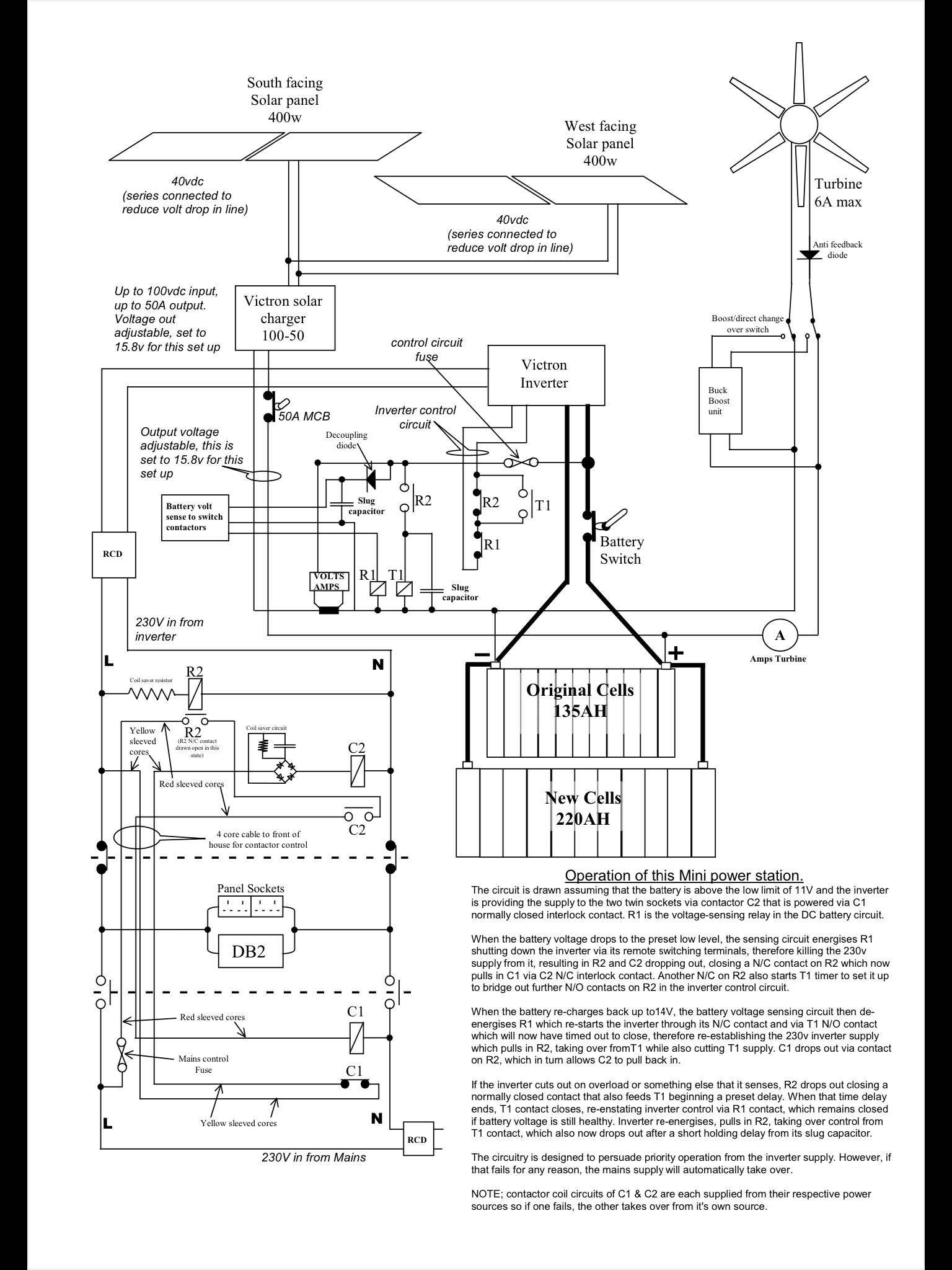Just to introduce myself.
I am a retired electrical and aeromodelling engineer, my wife and I live in west Wales as from 1987, I have worked for most of that time as a self employed electrical engineer working in a variety of industrial settings in a very rural area.
I have been encouraged by others in this forum to share my ideas and findings so that others with cranky thoughts and ideas might benefit, also that I might gain a nugget or two of useful know how.
Back in 2000, I wound down my electrical engineering due to the enormity of red tape that went with it. My wife and I then deviated into model aircraft kit manufacturing, that had the blessing of no red tape which is rare these days. Anyhow, we did model air trade shows which meant being out in an open field for a good few days totally off grid.
This is where I began to use the knowledge gained over the years to facilitate this. I decided to install wet NiCad cells in the caravan rather than use lead acid batteries. I did this because they have a very long guarantee (25 years then) that has now been reduced to 20, but nontheless I "personally" feel that they are a very good option for long term projects of this sort. I built a wind turbine from a very "Very" old washing machine motor and bits of left over alluminium sheet and odds and ends from other projects, mounted that on a mast atached to the tow hitch and roof of the caravan. Also fitted a very small solar panel on the roof of the van and this meant we could comfortably live off grid for a week or more depending on wind/sun. When we sold our model kit buisiness, my wife asked me what I was going to do with those NiCad cells, as they are still good. My Avatar is that wind turbine!!
After some umming and arring, we decided to re-install them in the house and start a new system to offset some of our costs (being that we had the NiCads and windmill). While what we subsequently added cost a few bob, it became very absorbing and with a few nice little rewards.
Here below is a circuit diagram of what I have done, I will answer as many questions as possible about it, that way I don't just boringly describe things if not needed.







